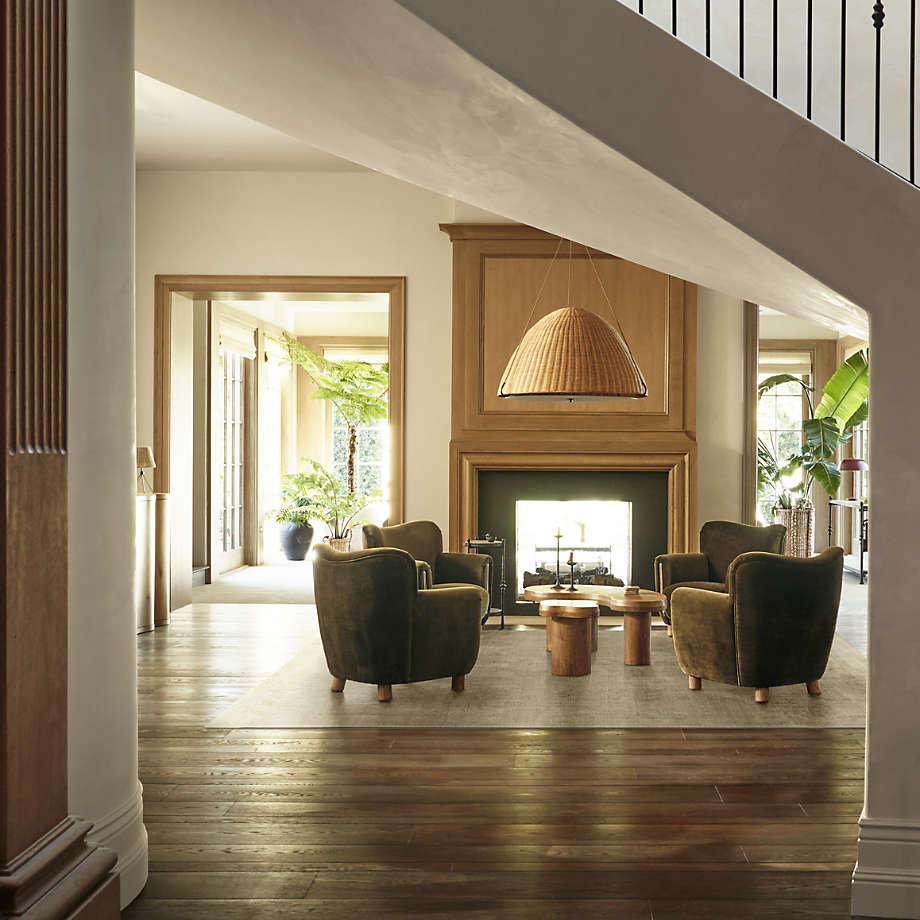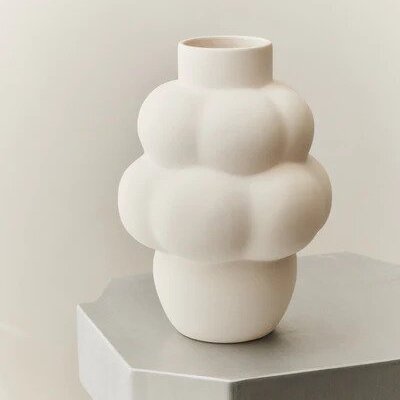I used to live in L.A. – these are the 5 must-have decor trends that Californians always get right, and why I love them all
With a mix of natural textures, weathered finishes and loose and relaxed furnishings, you can recreate a coastal California-style home wherever you live


If the end of summer has left you feeling rather blue, then take a moment to introduce a touch of 'California Casual' cool to your home this fall and winter instead. Loved by homeowners and interior designers alike, the laid-back, coastal style synonymous with California is a wonderfully versatile interior design trend.
Popular in homes the length and breadth of the country, a Californian-inspired scheme is an effortless way to bring a relaxing edge to a contemporary home.
From embracing a calm cream and blue color palette to the use of weathered, natural materials, a nautically nuanced look instantly injects personality into such a functional space.
So, whether you are honoring the geographical location of your home, or simply want to bring a bit of seaside serenity to your landlocked abode, these Californian home decor ideas will inspire.
5 Californian decor trends I love
You may already be familiar with, or even own, a few of these Californian-influenced designs. See which ones are having a moment below – at least for me – and get inspiration for how to decorate with them in your own space.
1. Add warmth with shiplap wall panels

'Paneling is a useful way of introducing warmth and character to a room – there's something cozy about being surrounded by wood. For an instant hit of coastal Californian charm, wall paneling is a must. ‘Tongue and groove paneling is a mainstay of laidback Californian design and it sits very well with Shaker-style cabinetry, as shown in the above kitchen.
A rougher, textural shiplap paneling can help create a more rustic feel, and contrasts with the eggshell finish of painted kitchen units. Shiplap can be painted in any color, but it is important to dilute the paint so that the texture of the timber shows through. Paneling is also very effective on ceilings,’ says Simon Temprell, interior design manager at Neptune.
Design expertise in your inbox – from inspiring decorating ideas and beautiful celebrity homes to practical gardening advice and shopping round-ups.
2. Decorate with a blue and white color palette

Far from being two-dimensional, a blue-and-white color palette can be used to achieve all sorts of looks, from smart and sophisticated to subtle and serene, depending on the shades you use and the proportions in which they are incorporated.
‘The combination of blue and white was made famous by painters and pottery makers during the Baroque period, and has been a source of inspiration to decorators from Italy to California ever since,’ says Claire Fouche, Volga Linen’s creative director.
Synonymous with the sea and sky, blues are often linked to coastal style and are a go-to for breathing freshness and calm into the home. ‘Blue and white create a tranquil atmosphere,’ says Debbie Leigh, design manager of fabric brand Iliv. ‘Blue is often associated with feelings of serenity and relaxation, while white helps make a room feel airy and spacious. Used together, these colors create a peaceful and inviting atmosphere.’
While it is prized for its soothing qualities, with a spectrum stretching from the palest hues to deep indigo, blue also has the power to make a strong impact, and when teamed with the countless varieties of white it offers endless possibilities for decorating.
There are lots of ways to incorporate this enduring combination into your home. When selecting paint shades, consider the orientation, of the room, suggests Simon Temprell, interior design manager at Neptune. ‘Blue and white has been a classic color combination forever as it is clean, crisp, and uplifting, especially in south-facing rooms. In a north-facing room, you might need to use a warmer white to offset the chill,’ he explains.
3. Use plenty of textural additions

Using texture in interior design is critical, and Californians live by this one rule. Quite simply, without texture, a space will fall flat. It's crucial to look at the room as a whole and bring an area together with mixed materials for vibrancy and warmth. It's a way of adding depth and dimension to a room as well as comfort.
Creating texture is not purely about how furniture and soft furnishings feel, but it's also about 'visual texture' – using different materials to add interest and breathe life into a room.
Interior designers use texture in the form of tactile objects like fabrics, wood, and stone to add physical comfort and visual interest to a space. Mixing materials and layering is key to making textural elements work.
Tiffany Leigh, of Tiffany Leigh Design, explains: 'Texture in interior design is all about creating tactile moments that invite touch. It refers to the feel, appearance, or consistency of a surface or material. Textures help to keep a space from feeling flat or one dimensional.'
Layering textures helps to add depth too. 'The layering of materials, colors, and shapes all amount to give your interiors an overall texture which can define the look and feel of a space,' says Martin Waller, co-founder of Andrew Martin. 'For a more multi-layered look, tactile weaves like bouclé look sublime when layered against the luxurious feel of faux shagreen or rough-hewn timber to give a room dimension, depth, and sense of heritage to your home.'
4. Level up with layering

Similarly to texture, layering is another design secret that Californian interior designers swear by. The art of layering is to learn how to use each of these individually and make them work together cohesively – building a room from the ground up.
‘In design, we are always looking for ways to add depth and intrigue to the spaces we create,’ says California-based, Jen Samson. ‘This is often achieved by curating a space filled with beautiful textures and interesting shapes. Many times, this can come from both architecture as well as the furnishings.
'In this project, it truly was the melange of all these elements that gave this large room so much character. A perfect mix of soft curves and hard edges, linear details and abstract forms all harmoniously contributing to this space.'
Once you've perfected every other element – floor, room color scheme, lighting, and window treatments – your chosen accessories act as your final layer.
Keepsakes, vases, planters, coffee table books, and flowers are those essential items that are the icing on the cake. They represent you. These pieces should invoke memories and therefore add that perfect finishing touch to your space.
5. Invest in timber furniture

Californian designers have been decorating with an 'old money' aesthetic long before the quiet luxury trend took over our Instagram feeds. While every aspect of the home is important, the choice of materials is particularly so in a space that exudes Californian cool, as it has such a visual impact.
Decorating with wood is nothing new – timber furniture and fittings have been a popular choice for years because of their timeless appeal, not to mention the fact solid wood is a durable material that gets better with age.
In recent years, there have been a number of new and interesting techniques that have reinvigorated the material and made this old staple a modern favorite. There are no hard and fast rules when using timber in a Californian-inspired home. Dark and light woods are mixed together. Raw wood and full-grain timber are seeing a comeback. And we're finding designs that combine rattan and woven elements with natural wood to create a new, relaxed mood in the home.
Shop the Californian decor trend edit
'Light' and 'airy' are the buzzwords for this relaxed style – it’s the epitome of cool. Here, our editors have curated their favorite looks.

Jennifer is the Digital Editor at Homes & Gardens, bringing years of interiors experience across the US and UK. She has worked with leading publications, blending expertise in PR, marketing, social media, commercial strategy, and e-commerce. Jennifer has covered every corner of the home – curating projects from top interior designers, sourcing celebrity properties, reviewing appliances, and delivering timely news. Now, she channels her digital skills into shaping the world’s leading interiors website.


